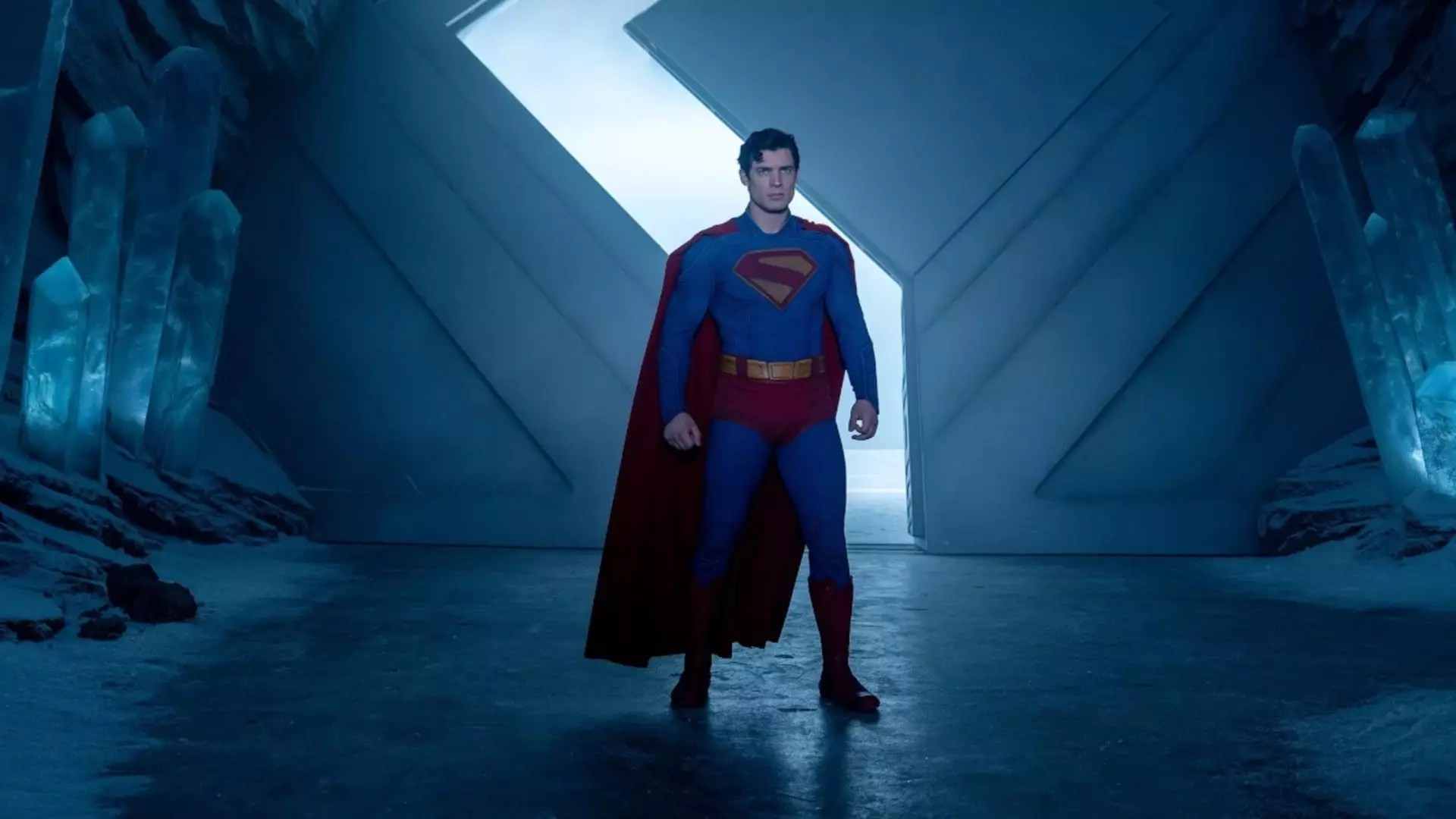The recent performance of Warner Bros.’ “Superman” signals more than just a successful film debut; it marks a pivotal moment in the comic book adaptation landscape, especially under the new leadership of James Gunn and Peter Safran. Their strategic vision seeks to breathe new life into DC’s aging cinematic universe, which has often struggled to match Marvel’s market dominance or brand consistency. While the early box office numbers are promising—$22.5 million in previews, placing it as the third-best Thursday for a superhero film—the real question lies beneath the surface: Is this a genuine revival or just a fleeting flicker of excitement?
The initial numbers suggest strong buzz and a potential resurgence for DC, a franchise that has long been overshadowed by Marvel’s relentless expansion. However, claiming victory solely based on preview figures or comparable opening weekends discounts the inherent risks that frame the broader picture. Gunn and Safran aim to craft a cohesive, long-term vision, but their track record, though impressive in some respects, bears caution: Marvel’s success stems from meticulous universe-building over years, not just in movies but across TV, merchandise, and fan engagement. Can DC replicate that momentum, especially with “Superman” as their flagship?
Box Office Performance: Small Wins in a Competitive Arena
Looking at the numbers, “Superman” is already outperforming previous Superman films in preview takings, with a noteworthy $22.5 million. Still, on the broader scale of superhero blockbusters, these figures require context. “The Dark Knight Rises” grossed over $30 million back in 2012, a stark reminder of how much the industry has evolved. Comparing current expectations of $130-140 million for its opening weekend remains an optimistic forecast, but not an insurmountable one. Past DC films, like “Batman v. Superman,” opened significantly higher, with $166 million, yet that film’s reception was divisive among audiences and critics alike.
This disparity signals that consumer enthusiasm can be volatile, heavily influenced by franchise consistency, storytelling quality, and marketing. It’s encouraging that critics have given “Superman” an 83% rating, but critical applause does not always translate to sustained box office success. The true test lies in the film’s staying power and whether it can maintain audience interest beyond the initial weekend surge.
The Significance of Strategic Positioning and Audience Perception
Warner Bros. and the new DC regime are betting on “Superman” to catalyze a broader redefinition of DC’s cinematic identity. Unlike Marvel’s tightly interwoven universe, DC has historically zigzagged, with solo hits like “The Dark Knight” and less successful ventures like “Suicide Squad” or “Justice League.” Gunn and Safran’s plan to develop a 10-year blueprint indicates a strategic shift—an attempt to bring cohesiveness and a fresh narrative direction.
However, the challenge lies in balancing nostalgia with innovation. Hardcore fans demand fidelity to classic mythos, while newcomers seek modernized, engaging stories. It’s a delicate tightrope walk—overreach could alienate core audiences, underwhelm the casual viewers. “Superman” must not only perform at the box office but also set a tone for the future—something that aligns with the center-right liberal position that recognizes the importance of tradition combined with flexibility, fostering both cultural continuity and progressive storytelling.
Critical Reception and Market Implications
The positive reception from critics and viewers alike gives hope for sustained success. An 83% rating on Rotten Tomatoes reflects a generally favorable response, which is vital in character-driven superhero narratives where audience engagement hinges on both spectacle and substance. This favorable perception could translate into repeat viewings, franchise merchandise sales, and broader cultural impact if messages resonate well.
Nevertheless, optimism must be tempered with vigilance. The film industry’s volatile nature—particularly in superhero genres—means that initial success often does not guarantee longevity. Market competition from other blockbusters, shifting audience preferences, and economic factors can rapidly alter a film’s trajectory. For DC, aligning creative ambition with realistic expectations remains essential in avoiding the pitfalls of overhype and underdelivery.
Final Thoughts: A Framework for Cautious Optimism
Despite the impressive early indicators, the true measure of “Superman’s” impact will unfold over the coming months. Its box office performance, cultural reception, and influence on DC’s long-term strategy require critical assessment beyond initial numbers. Warner Bros., under its new leadership, is at a crossroads where boldness must be balanced with prudence.
While there’s undeniable potential in reimagining Superman for a new era, skepticism remains warranted. Success will depend on whether this film can sustain interest, deliver on its narrative promises, and establish a stable foundation for future projects. The starting line has been crossed with promising figures and hopeful critical feedback. Still, the path ahead is fraught with inherent risks—risks that only keen strategic management and a commitment to quality can mitigate. If Warner Bros. can navigate these intricacies, “Superman” might not just soar briefly but become a pivotal chapter in the rebirth of DC’s cinematic empire—if it dares to stay the course.


Leave a Reply